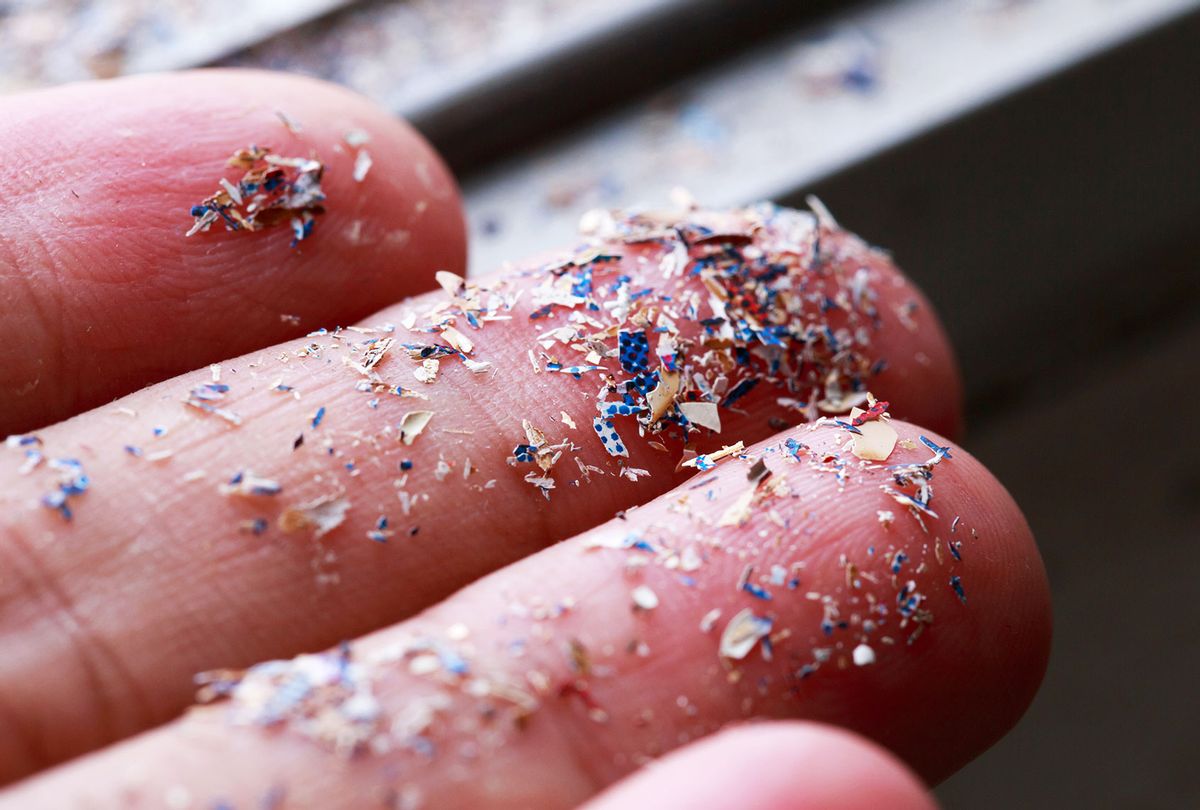The word "phthalate" is ludicrously difficult to spell for something that is absolutely ubiquitous. Because phthalates make plastic products more consistent and durable, the chemical can be found everywhere: in plumbing pipes and medical tubing, in soap and cosmetic products, in wood finishing and countless adhesives. Since the start of the century, at least 95 percent of the American population is confirmed to have phthalates coursing through their bodies.
Now, a recent study of unprecedented scope has revealed that phthalates are linked to childhood cancers.
Lead by scientists at the University of Vermont Cancer Center and published in the Journal of the National Cancer Institute, researchers compiled data on nearly 1.3 million live births in Denmark between 1997 and 2017. Within that group, there were 2,027 cases of childhood cancer. They also assessed phthalate exposure by seeing whether mothers had filled prescriptions for medications formulated with phthalates either during their pregnancies (to measure gestational exposure) and for their children up until they were 19 years old (to measure childhood exposure).
RELATED: How plastics are making us infertile — and could even lead to human extinction
The researchers found that "childhood phthalate exposure was strongly associated with incidence of osteosarcoma" and identified correlations with other cancers like lymphoma "driven by associations with Hodgkin and non-Hodgkin lymphoma, but not Burkitt lymphoma." They also found that "associations were apparent only for exposure to low-molecular phthalates, which have purportedly greater biological activity."
Although the scientists did demonstrate a correlation between the presence of phthalates and cancer, that in itself does not prove a causal link.
Want more health and science stories in your inbox? Subscribe to Salon's weekly newsletter The Vulgar Scientist.
"Lingering questions include which specific phthalate(s) are responsible for these associations, by what mechanisms they occur, and to what extent childhood cancer cases could be avoided by reducing or eliminating the phthalate content of medications and other consumer products," the scientists write.
Phthalates are part of a group of chemicals known as endocrine disruptors because they alter the functioning of our hormone systems. In an interview with Salon last year, Dr. Shanna Swan — a professor of environmental medicine and public health at Mount Sinai School of Medicine in New York City who studies endocrine disruptors — elaborated on the specific danger posed by phthalates.
"These things come into the body and then leave quickly," Swan told Salon. "And that's great. What's not so great is that they're coming in all the time because there's so many sources of exposure. So major sources of exposure for phthalates are food. That's probably the primary source." Phthalates enter our food from pesticides to the processes through which they are transported to our grocery stores. She added that "another thing that phthalates do is they make cosmetics and personal care products more useful because they increase absorption into the skin. They increase the retention of color, which is great for nail polish and lipstick. And they hold odor, so anything fragrant has phthalates."
Swan also noted that phthalates could be linked to dropping human sperm counts and other pervasive reproductive health issues. Nor are they alone in terms of being common plastic chemicals that have potentially damaging health effects.
"I talked about phthalates, which makes plastic soft. Bisphenols make plastic hard," Swan told Salon. "There's this Bisphenol A, there is Bisphenol S, there are many of them, and these are a class of chemicals that make plastics hard." They can be found everywhere from tin cans and cash register receipts to pizza boxes and "have the property of being estrogenic. They apparently increase estrogen in the body, and that has a lot of reproductive effects as well."
Primarily as a result of hormone-altering chemicals existing in plastics, Western sperm counts have dropped from 99 million per milliliter to 47 million per milliliter since the 1970s. (Below 15 million sperm per milliliter is considered a low sperm count.) Meanwhile, the average American consumes roughly a credit card worth of plastic each week through food and water contamination alone.
For more from Salon on plastic pollution, read the following articles:



Shares